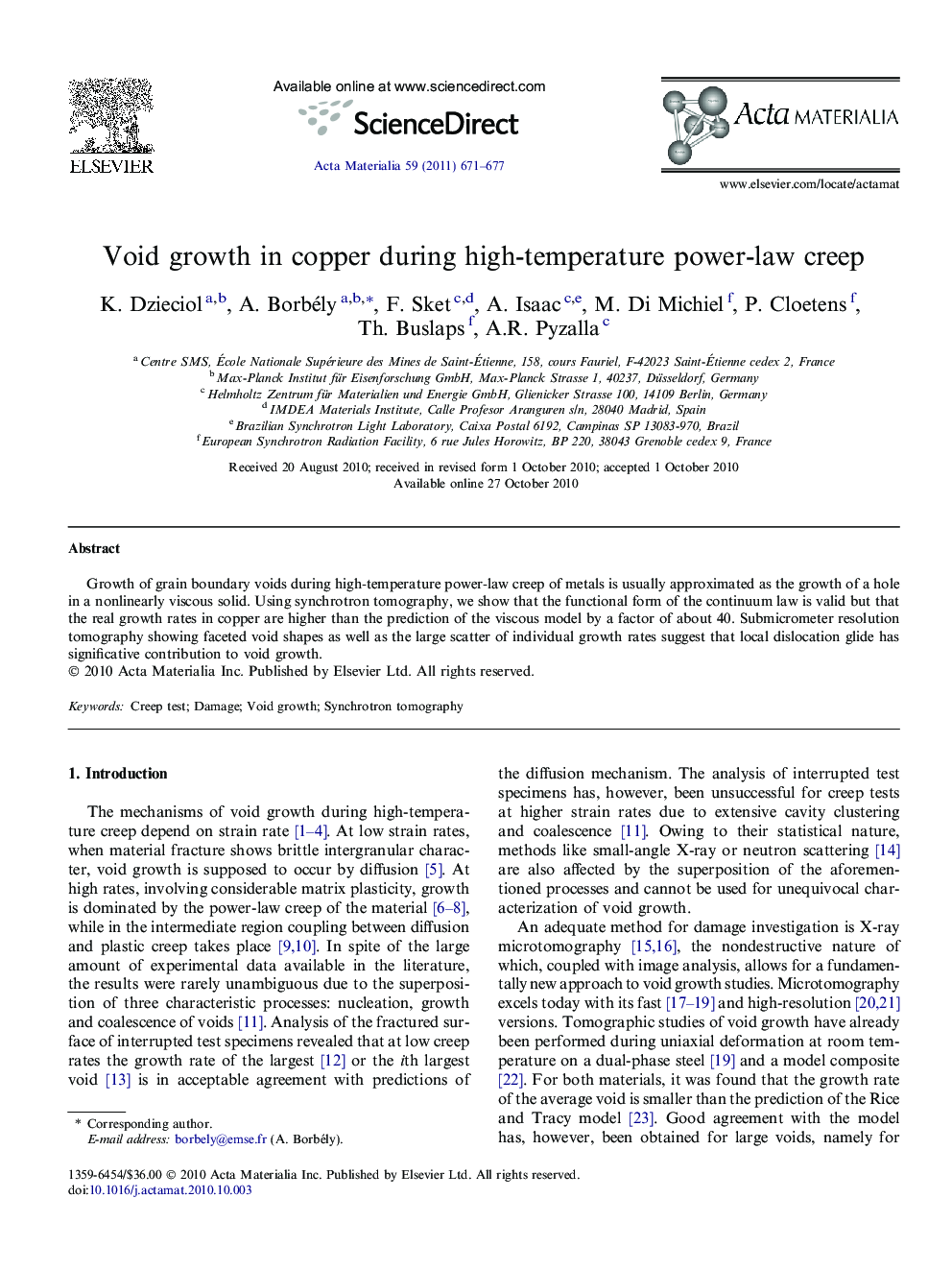| Article ID | Journal | Published Year | Pages | File Type |
|---|---|---|---|---|
| 1447627 | Acta Materialia | 2011 | 7 Pages |
Abstract
Growth of grain boundary voids during high-temperature power-law creep of metals is usually approximated as the growth of a hole in a nonlinearly viscous solid. Using synchrotron tomography, we show that the functional form of the continuum law is valid but that the real growth rates in copper are higher than the prediction of the viscous model by a factor of about 40. Submicrometer resolution tomography showing faceted void shapes as well as the large scatter of individual growth rates suggest that local dislocation glide has significative contribution to void growth.
Related Topics
Physical Sciences and Engineering
Materials Science
Ceramics and Composites
Authors
K. Dzieciol, A. Borbély, F. Sket, A. Isaac, M. Di Michiel, P. Cloetens, Th. Buslaps, A.R. Pyzalla,
